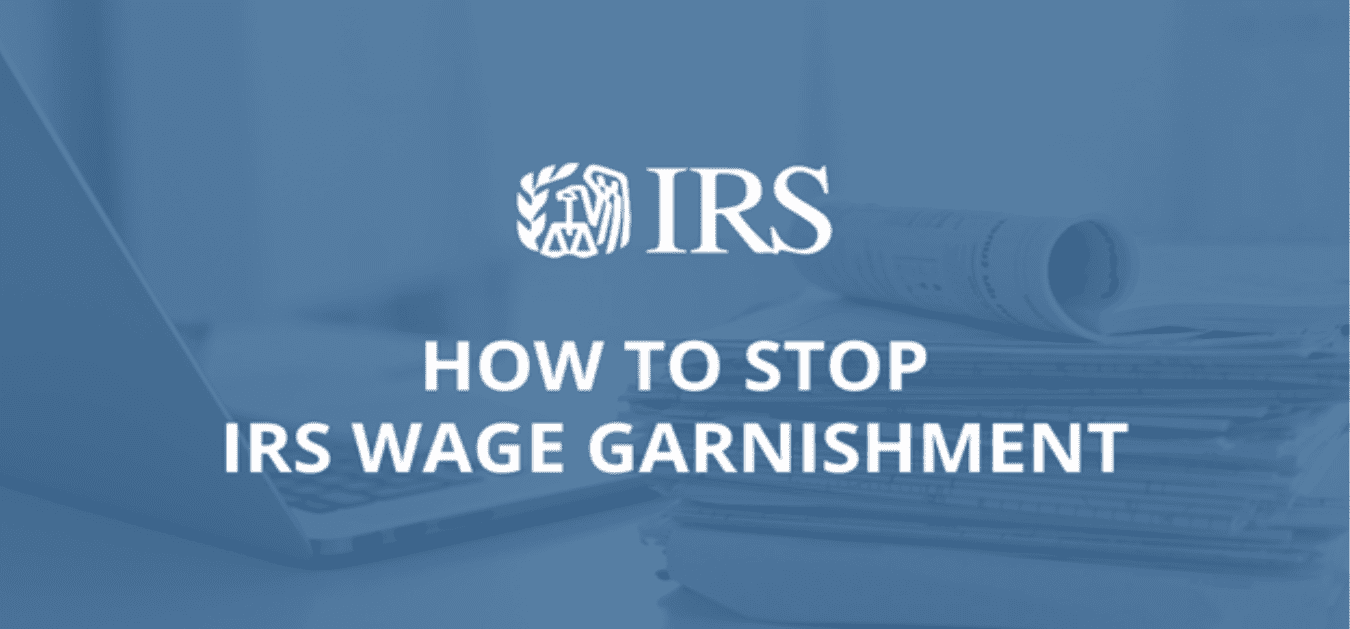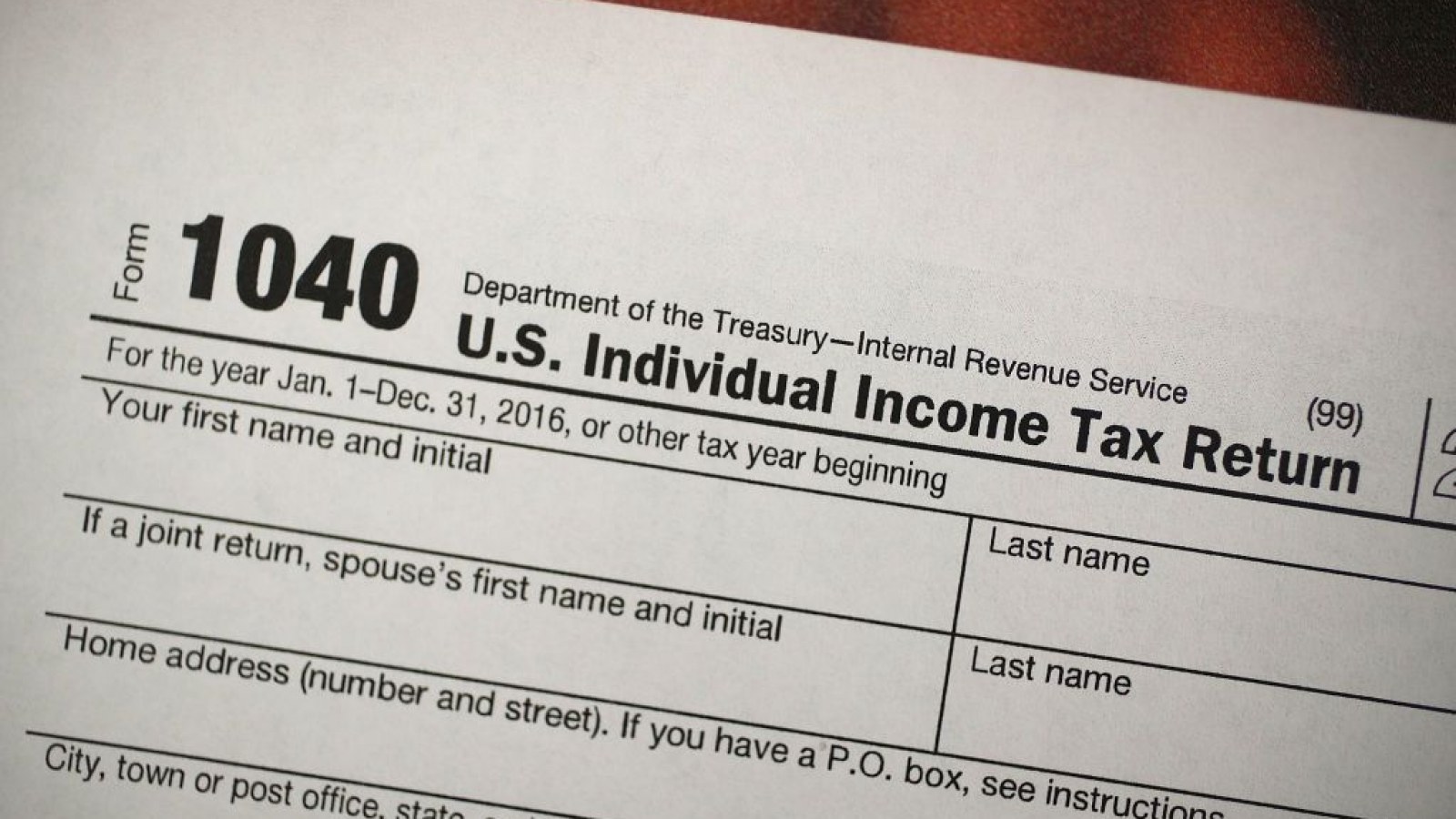Home>Finance>How Much Can The IRS Garnish From Social Security?


Finance
How Much Can The IRS Garnish From Social Security?
Published: October 31, 2023
Discover how much the IRS can garnish from your Social Security benefits and learn important financial strategies to protect your income.
(Many of the links in this article redirect to a specific reviewed product. Your purchase of these products through affiliate links helps to generate commission for LiveWell, at no extra cost. Learn more)
Table of Contents
- Introduction
- Understanding Social Security Benefits
- The Role of the IRS in Garnishing Social Security Benefits
- Limits on IRS Garnishment of Social Security Benefits
- How the IRS Determines the Amount to Garnish
- Exceptions and Exemptions to IRS Garnishment of Social Security Benefits
- Steps to Take if Your Social Security Benefits are Being Garnished
- Conclusion
Introduction
Welcome to our comprehensive guide on how much the IRS can garnish from Social Security benefits. If you’re a retiree or someone who relies on Social Security income, it’s important to understand the potential impact of IRS garnishments on your financial well-being.
Social Security benefits are a crucial source of income for millions of Americans, providing financial security during retirement or in times of disability. However, certain circumstances may lead to the IRS garnishing a portion of these benefits to satisfy outstanding tax debts. Understanding the rules and limitations regarding IRS garnishment of Social Security benefits is essential to navigati ng this complex terrain and protecting your financial interests.
In this article, we will delve into the various aspects of IRS garnishment of Social Security benefits. We’ll explore how the IRS determines the amount they can garnish, the limits imposed on garnishment, and the exceptions and exemptions that may be available to you. Additionally, we’ll provide practical steps you can take if your Social Security benefits are being garnished.
It’s important to note that while we strive to provide accurate and up-to-date information, this guide should not be considered professional tax advice. We strongly recommend consulting with a qualified tax professional or financial advisor to address your specific situation.
Now, let’s dive into the details of Social Security benefits garnishment and how it can impact your financial stability.
Understanding Social Security Benefits
Before diving into the intricacies of IRS garnishment of Social Security benefits, it’s essential to have a solid understanding of what these benefits entail. Social Security is a federal program designed to provide financial assistance to individuals who have reached retirement age, as well as those with disabilities and surviving family members of deceased workers.
Retirement benefits are the most common form of Social Security benefits and are available to individuals who have contributed to the Social Security system through payroll taxes during their working years. The amount of retirement benefits you receive is based on your lifetime earnings and the age at which you choose to start receiving benefits. These benefits are intended to replace a portion of your pre-retirement income and provide a reliable income stream during your retirement years.
In addition to retirement benefits, Social Security also provides disability benefits to individuals who have a qualifying medical condition that prevents them from working. These benefits are meant to provide financial support to those who cannot engage in substantial gainful activity due to their disability. To qualify for disability benefits, you must meet specific criteria set by the Social Security Administration.
Furthermore, Social Security benefits can extend to spouses, children, and other dependents of retired or disabled workers. These benefits are known as dependent benefits and are available to eligible family members based on the worker’s work history and contributions to the Social Security system.
Understanding the different types of Social Security benefits is crucial because the IRS can potentially garnish any of these benefits to satisfy outstanding tax debts. Now that we have a basic understanding of Social Security benefits, let’s explore the role of the IRS in garnishing these benefits and the limitations associated with the process.
The Role of the IRS in Garnishing Social Security Benefits
When it comes to garnishing Social Security benefits, the Internal Revenue Service (IRS) plays a crucial role. The IRS is responsible for collecting federal tax debts owed by individuals, and in some cases, they may resort to garnishing Social Security benefits as a means to satisfy these outstanding debts.
Before the IRS can garnish your Social Security benefits, they must first establish that you have a delinquent tax debt. This typically occurs after multiple unsuccessful attempts to collect the debt, including sending notices and demanding payment. Once the IRS has deemed your debt as delinquent, they can initiate the process of garnishing your Social Security benefits.
It’s important to note that the IRS has specific guidelines and limitations when it comes to garnishing Social Security benefits. These guidelines are in place to protect individuals who rely on Social Security income as their primary source of financial support.
One important limitation is that the IRS cannot garnish the entirety of your Social Security benefits. There are statutory limits on the amount that can be garnished, ensuring that you have a certain level of income available to cover your basic living expenses. This limit is derived from the Federal Payment Levy Program (FPLP), which sets a maximum garnishment threshold based on the federal poverty guidelines.
In addition to the garnishment limit, the IRS must also consider any exemptions or exceptions that apply to your specific situation. Some individuals may be exempt from garnishment altogether, while others may qualify for a reduced garnishment amount based on their financial circumstances.
The process of garnishing Social Security benefits is complex, involving communication between the IRS, the Social Security Administration (SSA), and the individual receiving the benefits. The IRS will typically notify you in writing about their intent to garnish and provide information on how to appeal the decision or request an exemption. It’s essential to carefully review these notices and take appropriate action within the specified timeframe.
Now that we have an understanding of the role of the IRS in garnishing Social Security benefits, let’s explore the limits imposed on garnishment and how the IRS determines the amount to garnish.
Limits on IRS Garnishment of Social Security Benefits
While the IRS has the authority to garnish Social Security benefits to recover outstanding tax debts, there are limits in place to protect individuals from excessive hardship. These limits ensure that you have a certain amount of income available to cover your basic living expenses. Understanding these limits is crucial to maintaining financial stability while dealing with tax debts.
The primary limit on IRS garnishment of Social Security benefits is derived from the Federal Payment Levy Program (FPLP). This program sets a maximum garnishment threshold based on the federal poverty guidelines. The specific amount that can be garnished is calculated by considering factors such as household size and income level.
As of 2022, the FPLP sets the maximum garnishment percentage at 15% of the monthly Social Security benefit amount. This means that the IRS can garnish up to 15% of your Social Security benefits to satisfy outstanding tax debts.
However, it’s important to note that the 15% limit only applies to garnishments for tax debts. Other types of debts, such as child support or spousal support obligations, may allow for higher garnishment percentages. In these cases, the percentage may vary depending on state laws and the specific circumstances of the debt.
Furthermore, the IRS considers the amount of your monthly Social Security benefits when determining the garnishment amount, not your total yearly benefits. This ensures that your monthly income is not significantly reduced, providing some relief for individuals who rely on Social Security as their primary source of financial support.
In addition to the 15% limit, there is another important protection in place for individuals receiving Supplemental Security Income (SSI). SSI is a needs-based program that provides financial assistance to disabled individuals with limited income and resources. The IRS cannot garnish SSI payments to satisfy tax debts, offering additional protection to these vulnerable individuals.
While the 15% limit and the protection for SSI payments provide essential safeguards, it’s important to remember that the IRS can still garnish a portion of your Social Security benefits. This can have a significant impact on your monthly income, making it necessary to carefully assess your financial situation and plan accordingly.
Now that we understand the limits on IRS garnishment of Social Security benefits, let’s delve into how the IRS determines the amount to garnish.
How the IRS Determines the Amount to Garnish
When it comes to garnishing Social Security benefits, the IRS follows a specific formula to determine the amount that can be withheld from your benefits. This formula takes into account various factors, including your monthly benefit amount and any applicable exemptions or deductions.
The first step in the process is to calculate your “disposable income.” This is the amount of your monthly Social Security benefits that the IRS considers available for garnishment after accounting for certain expenses and deductions.
To calculate your disposable income, the IRS starts by determining your total monthly benefit amount. This includes any retirement, disability, or dependent benefits you receive. They will then subtract certain allowable deductions, such as mandatory taxes, Medicare premiums, and court-ordered child support or spousal support payments.
Once your disposable income has been calculated, the IRS applies the garnishment limit. As mentioned earlier, the maximum amount that can be garnished is 15% of your monthly benefit amount, as determined by the Federal Payment Levy Program (FPLP).
It’s important to note that the IRS will not automatically garnish the maximum allowed amount. They will consider your disposable income and any applicable exemptions or exceptions before determining the final garnishment amount.
If you believe that the garnishment amount proposed by the IRS would create undue financial hardship for you, you may have grounds for an exemption or reduction. The IRS takes into account your essential living expenses, such as housing, food, and medical care, when assessing your financial situation. If these expenses exceed your disposable income, they may reduce the garnishment amount or grant an exemption altogether.
It’s crucial to provide accurate and detailed information about your financial situation to the IRS when appealing or requesting an exemption. This includes providing documentation and supporting evidence, such as bills, receipts, or medical records, to substantiate your claims.
Now that we understand how the IRS determines the amount to garnish, let’s explore the exceptions and exemptions that may be available in certain circumstances.
Exceptions and Exemptions to IRS Garnishment of Social Security Benefits
While the IRS has the authority to garnish a portion of your Social Security benefits to satisfy outstanding tax debts, there are exceptions and exemptions in place to provide relief in certain circumstances. These exceptions and exemptions aim to protect individuals who would face extreme financial hardship if their benefits were subject to garnishment.
One of the main exceptions to IRS garnishment of Social Security benefits is the “head of household” exemption. If you are considered the head of your household, meaning you provide more than half of the financial support for a dependent, your Social Security benefits may be protected from garnishment. This exemption is intended to safeguard the well-being of families who rely heavily on Social Security benefits as their primary means of support.
In addition to the head of household exemption, the IRS also takes into consideration your necessary living expenses when assessing your financial situation. If your essential expenses, such as housing, food, or medical care, exceed your disposable income (after allowable deductions), the IRS may reduce the garnishment amount or grant an exemption altogether.
It’s important to note that the burden of proof lies with you to establish that an exemption or reduction is warranted. You will need to provide accurate and detailed documentation to support your claims. This includes providing evidence of your financial circumstances, such as bills, receipts, medical records, or other relevant documentation.
It’s worth mentioning that Social Security benefits designated for certain types of assistance, such as Supplemental Security Income (SSI), are generally protected from garnishment by the IRS. SSI payments are provided to disabled individuals with limited income and resources, and the IRS cannot garnish these benefits to satisfy tax debts.
Furthermore, it’s important to be aware that each state may have its own laws regarding the garnishment of Social Security benefits. Some states provide additional protections or exemptions beyond those offered by the federal government. It’s advisable to consult with a qualified tax professional or legal advisor to understand the specific laws and regulations in your state.
If you believe you qualify for an exemption or reduction in the garnishment amount, it’s crucial to take prompt action. You can appeal the IRS’s decision or request an exemption by following the instructions provided in the notice you received. Be sure to respond within the specified timeframe, including any required documentation or supporting evidence.
Now that we have explored the exceptions and exemptions to IRS garnishment of Social Security benefits, let’s move on to the steps you can take if your benefits are being garnished.
Steps to Take if Your Social Security Benefits are Being Garnished
Discovering that your Social Security benefits are being garnished by the IRS can be a distressing situation. However, there are steps you can take to address the issue and potentially mitigate the impact on your financial well-being. Here are some important steps to consider if your Social Security benefits are being garnished:
1. Review the Notice: Carefully read the notice you received from the IRS regarding the garnishment of your Social Security benefits. Understand the specifics of the garnishment, including the amount being withheld and the reason for the garnishment.
2. Determine Garnishment Accuracy: Ensure that the garnishment is accurate and appropriate. Double-check your tax records to verify if any outstanding tax debts exist. In some cases, misinformation or errors can occur, leading to an incorrect garnishment.
3. Understand Your Rights: Familiarize yourself with your rights in the garnishment process. This includes understanding the limitations on the amount that can be garnished and any exemptions or reductions that may apply to your situation. Consult with a tax professional or legal advisor to ensure you’re fully aware of your rights.
4. Gather Supporting Documentation: Collect any necessary documentation to support your case for an exemption or reduction in the garnishment amount. This may include financial records, bills, receipts, or medical records that demonstrate your financial hardship or the need for exemption.
5. Contact the IRS: Reach out to the IRS to discuss your garnishment and explore potential options for relief. You can contact the phone number provided in the notice or visit your local IRS office. Be prepared to provide all relevant information and supporting documentation to support your case.
6. File for an Appeal or Request an Exemption: If you believe that the garnishment is causing undue financial hardship, file an appeal or request an exemption with the IRS. Follow the instructions provided in the notice to initiate the appeal process and submit all required forms and supporting documentation. Be sure to meet any deadlines and provide a detailed explanation of your financial situation.
7. Seek Professional Assistance: If you feel overwhelmed or unsure about navigating the garnishment process, consider seeking professional assistance. A qualified tax professional or financial advisor can provide guidance, review your options, and help you build a strong case for an exemption or reduction.
8. Budget and Explore Alternative Income Sources: While the garnishment is in effect, it’s important to reassess your budget and determine how to manage your finances with a reduced income. Look for ways to trim expenses and explore alternative income sources to help cover your essential expenses.
9. Stay Informed: Keep yourself informed about any updates or changes in the garnishment process. Stay in contact with the IRS and regularly review your financial situation to ensure you’re taking the necessary steps to address the garnishment effectively.
Remember, the garnishment of Social Security benefits can be a complex and stressful situation. It’s crucial to act promptly, gather the necessary information, and seek appropriate assistance to protect your financial interests. By following these steps and taking the appropriate actions, you can navigate the garnishment process more effectively.
Now, let’s conclude our comprehensive guide on IRS garnishment of Social Security benefits.
Conclusion
Understanding the potential impact of IRS garnishment on your Social Security benefits is crucial for your financial well-being. While the IRS has the authority to garnish a portion of your benefits to satisfy outstanding tax debts, there are limits in place to protect individuals from excessive hardship.
In this comprehensive guide, we explored the various aspects of IRS garnishment of Social Security benefits. We discussed the role of the IRS in the garnishment process, the limits imposed on garnishment, and the factors that determine the amount to be garnished. We also delved into the exceptions and exemptions that may apply to certain individuals, as well as the steps you can take if your benefits are being garnished.
It’s essential to carefully review any notices received from the IRS regarding the garnishment and understand your rights in the process. If you believe that the garnishment is causing undue financial hardship, it’s important to file an appeal or request an exemption, providing all necessary documentation to support your case.
Remember to stay informed and seek professional assistance if needed. Consulting with a qualified tax professional or financial advisor can help you navigate the garnishment process more effectively and protect your financial interests.
Lastly, it’s important to recognize that this guide is for informational purposes only and should not be considered professional tax advice. We strongly recommend consulting with a qualified tax professional or financial advisor to address your specific situation.
By understanding your rights, taking appropriate actions, and seeking assistance when needed, you can navigate the process of IRS garnishment of Social Security benefits more effectively and protect your financial stability.
Thank you for reading our guide, and we hope it has provided helpful insights into this important topic.














